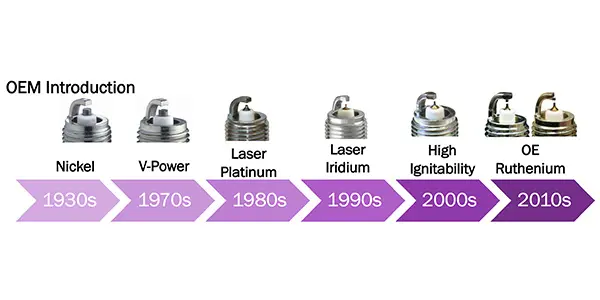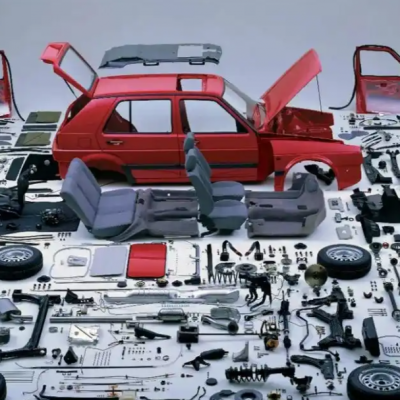What Are the effects of not changing spark plugs?
If you think of the engine as the heart, the spark plug is the pacemaker. Every ignition in the cylinder needs to spark plug to ignite the mixture in the cylinder. This puts the spark plug in a high-temperature, high-pressure working environment for a long time, which can be described as “hot”. Therefore, the spark plug is a tried and tested warrior, the name is true.
Table of Contents
ToggleLearn about spark plugs
The role of spark plugs
The role of the spark plug is to introduce the high voltage generated by the ignition coil into the engine’s cylinders, generating a spark between the electrode gaps to ignite the mixture, thus enabling the engine to do its work. Therefore, the spark plug is also known as the “heart” of the engine.
How to determine if spark plugs need to be replaced?
First, check if the engine starts normally when cold and observe any vibration. It’s time to inspect and replace the spark plugs if difficulties are starting or abnormal vibrations and noises.
Next, remove the spark plugs and check for signs of melted electrodes, oil stains, or severe carbon buildup. If any of these issues are present, the spark plugs need to be replaced.

How often are spark plugs changed?
When it comes to replacement intervals, it’s important to first understand the types of spark plugs. The common types of spark plugs include copper core spark plugs, platinum spark plugs, iridium spark plugs, iridium-platinum spark plugs, and double iridium spark plugs. Among these, copper core spark plugs are the most widely used, with a typical replacement interval of 20,000 to 30,000 kilometers. The lifespans of the other types are as follows: platinum spark plugs around 40,000 kilometers, iridium spark plugs around 60,000 kilometers, iridium-platinum spark plugs around 80,000 kilometers, and double iridium spark plugs around 100,000 kilometers.
Additionally, the replacement intervals differ between fuel-injection engines and direct-injection engines. In general, we recommend a 60,000-kilometer replacement interval for fuel-injection engines, while direct-injection engines should be replaced every 20,000 kilometers.
For professional technicians, changing spark plugs is not a difficult task. However, if you are capable and consider doing it yourself, it’s still not recommended to attempt spark plug replacement casually. Firstly, because the process involves high-voltage components like ignition coils and spark plug wires, which can be dangerous. Secondly, professional tools such as a torque wrench are essential; otherwise, improper handling may damage the pistons and cylinder block.

Aging of the center electrode
After more than 30,000 kilometers of use, ordinary nickel alloy spark plugs show a significant increase in gap (typically ranging from 0.6 to 1.6 mm), severe aging of the center electrode, and a loss of metallic luster on the threaded section, which appears blackened. Although they may not be completely unusable yet, their ignition performance is undoubtedly greatly reduced.

Compatible with the same nickel alloy spark plug!
You can see that the gap of the new spark plug is significantly smaller than the one being replaced. Don’t forget this step when changing spark plugs.

When replacing spark plugs, carbon buildup is often found
Many car owners may feel anxious when they see it, but this is a common issue and nothing to panic about.
There are several reasons for spark plug carbon buildup:
- Incorrect spark plug model selection.
- An overly rich air-fuel mixture or excessive oil in the mixture.
- Frequent engine starts or prolonged engine operation.
- Excessive lubrication oil in the crankcase.
- Severe piston wear.
- Delayed ignition timing.
- Prolonged low-speed engine operation.
In any case, troubleshooting the issue and ultimately resolving it is the priority. If there is carbon buildup on the spark plug, the piston top will be affected, so it needs to be taken seriously and the carbon buildup should be cleaned properly.
Based on the vehicle’s usage, it’s generally recommended to perform a thorough engine carbon cleaning after 30,000 to 40,000 kilometers. Even if the old spark plugs appear normal when removed, you can use an endoscope to check the carbon condition on the piston top. Since you’re already disassembling it, it’s better to prevent issues before they arise.
Yeahengine
Yeahengine sells engine long blocks as well as genuine engine parts including spark plugs. We have more than 10 years of industry experience, global logistics, and single parts can be shipped, please contact us and get a quote.






2 Comments
Do you sell engine parts?
Yes, engine long blocks, engine parts, and forgings.